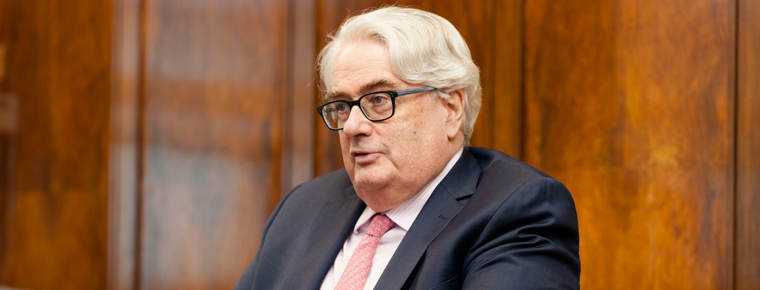
Supreme Court waiting times are at historic low
The Supreme Court annual report shows that waiting times for the hearing of appeals have dropped to an historic low of 14 weeks, despite the challenges of dealing with COVID-19 restrictions.
Supreme Court Registrar John Mahon said public-health restrictions did not delay court hearings in any significant way during 2020, and a backlog was not allowed to develop.
The report shows that 117 remote sessions of the court took place last year, with the first remote hearing only 40 days after announcement of the first set of COVID-related public-health restrictions.
“In a truly unprecedented year, the Supreme Court moved quickly to conducting its work remotely, ensuring continuity in the court’s core function – the determination of cases that come before it,” Chief Justice Frank Clarke said.
Remote reservations
Only one appeal was not heard remotely. This was the Friends of the Irish Environment climate change case, which was conducted before a court of seven sitting in the hall in King’s Inns in Dublin 7.
Despite the court’s switch to remote hearings, the chief justice expressed some reservations about them, saying he and his colleagues believed they were not as effective as the traditional model of physical hearings.
“The ability to interact fully with counsel is reduced, thus leading to most questions being deferred until the end of counsel’s submissions or a suitable gap in proceedings,” he said, adding that more matters were also now being dealt with on paper, which did not always save time or costs.
He concluded, however, that the court would “undoubtedly” give serious consideration to retaining remote hearings when the main pandemic restrictions were lifted.
New practices
As well as remote hearings, the court introduced revised rules and practices to manage cases before hearing in the court room.
The chief justice said that the Supreme Court “almost invariably now issues, in advance of the hearing of substantive appeals, a statement of case which sets out the understanding of the court of the background and issues involved in the appeal”.
This is often accompanied by a request for clarification, which allows the judges to better understand the precise matters which the court will be required to decide.
“This procedure had been in contemplation for some time but was expedited because of the need for greater focus given the limitations of remote hearings,” the chief justice said.
He also said it would have been difficult to bring in these innovations if the Supreme Court had still been dealing with its share of a backlog of work which had built up before the establishment of the Court of Appeal.
Applications drop
The chief justice said waiting times for the hearing of appeals were approaching the point of being as short as was possible, adding that it would not be realistic to reduce the waiting time much further without unrealistic demands being placed both on the parties and on the court.
The report shows that 142 new applications for leave-to-appeal cases were lodged last year, a drop of 38% compared with the previous year.
The chief justice said this reduction — which the court expects to be short-lived — may have been partly due to the significant impact of pandemic restrictions on the work of the High Court.
158 applications for leave had been resolved by the end of the year. The court delivered 89 written judgments during 2020.
The number of reserved judgments today (14 April) stands at six, compared with 20 in other years.